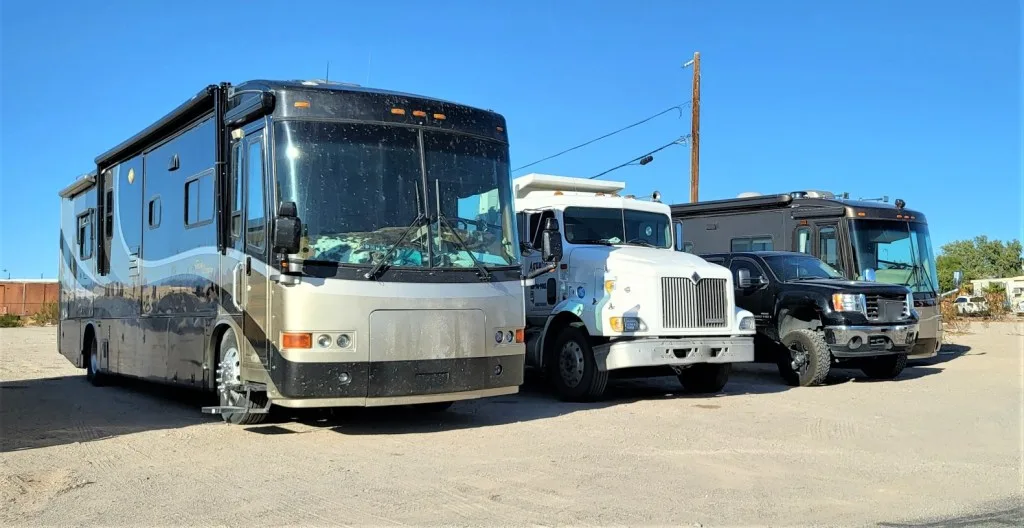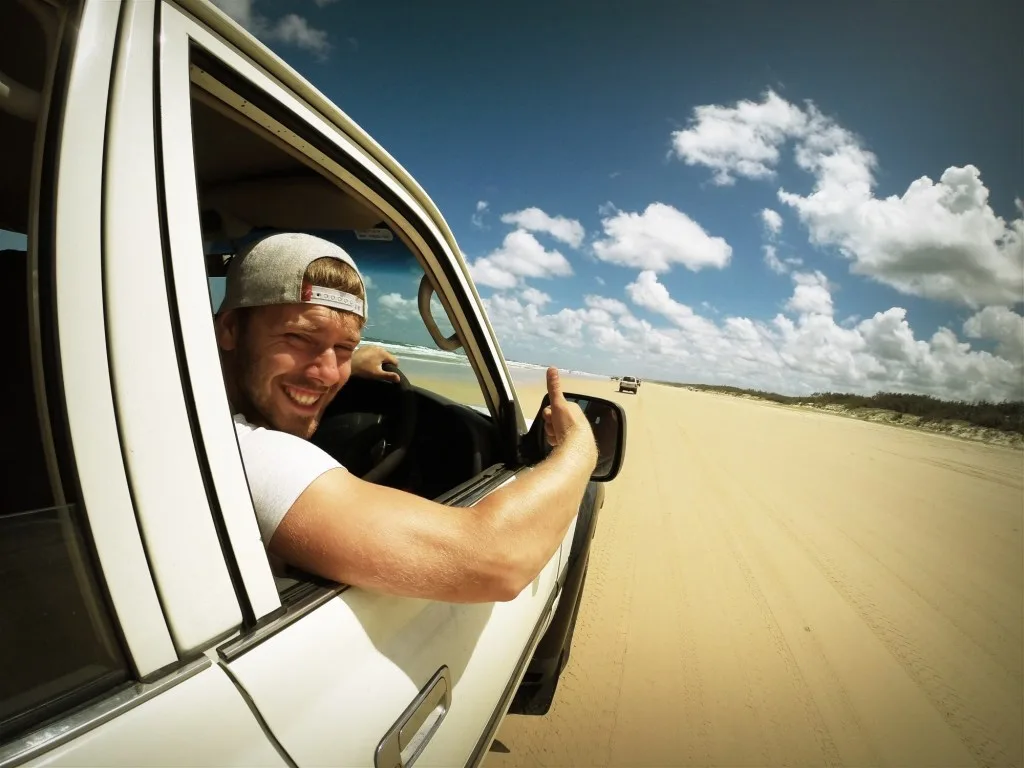When a toy hauler is just not big enough for all of your stuff, you might consider upgrading to a toterhome.
You’ll get the chance to design your rig as you see fit, with plenty of living and sleeping space additional cargo room for toys like a boat, motorcycles, and side-by-sides.
You can even pull a trailer that converts into the perfect mother-in-law suite. In fact, the toterhome might be the closest thing to bringing home along with you on the road.
Let’s learn more about these extravagant setups!
What Is a Toterhome?
It’s hard to miss a massive RV on a semi or heavy-duty truck chassis. These toterhomes live up to their name, as they can tote many toys and equipment. You can get most of them custom-built for your unique needs.
Some RVers have found the usual toy haulers don’t have enough space or power to bring along motorized vehicles, so they upgrade to a toterhome. And others design their rigs to accommodate an extra trailer attached by a hitch.
Some purchasers want the room to carry a race car, tools, and their crew to the next competition. And still, others look for something more like their sticks-and-bricks home.
What Are the Benefits of a Toterhome?
Most toterhome RVers love the ability to bring along a lot more than your standard RV. So the average GVWR is between 26,000 and 40,000 lbs. This means you won’t have to count every ounce of weight loaded in your recreational vehicle. You’ll have room and weight to spare.
Another appealing feature of a toterhome is its spaciousness. Most measure at least 40 ft and have separate living and cargo rooms, making them useful for professional sports team transportation.
Because of its size and power, everything can be larger in a toterhome. This includes water tanks, generators (and a few extra if you envision living off-grid for a while), and fuel. How does a 150-gallon water tank sound? Even black water tanks can be as large as 75 gallons.
Even though a toterhome may look like a bully RV on steroids on the outside, rest assured that they have highly luxurious interiors. High-end amenities, appliances, and finishes come standard in these big rigs.

What Are the Downsides?
The obvious downside of camping in a toterhome is finding a campsite large enough to accommodate it. You may find a big enough spot if you plan to boondock on public land. But toterhome owners discover that conventional campgrounds don’t have sites that’ll easily handle a rig of their size.
With diesel semi engines, the cost of fuel may be a concern, as well. On average, they get 7 to 13 mpg, depending on terrain, speed, and driving style. But when you think about it, an average V8 Class C gas engine can get just about the same numbers with less space and less power. So maybe fuel costs will rank lower on your list of worries.
You should also consider if you’ll need a commercial driver’s license. You’ll have to get one if your rig weighs more than 26,000 lbs or if you’ll transport more than 16 people, as many professional sports teams might do. These issues might not cause a problem, but you should address them before deciding on the RV you wish to purchase.
Pro Tip: Before you try to park your big rig at a campsite, make sure you Don’t Assume Your RV Can Fit Here. Here’s why!

Who Makes the Toterhome?
The Rev Group, which produces Renegade RVs, is a popular commercial manufacturer of toterhomes. Their 2022 lineup includes four different models, from the Explorer which ranges from 38 ft to 40 ft, to the Classic, with 16 floorplans.
The Verona offers four options from 34 to 40 ft, including the Verona LE, defined by its highly luxurious interior, accentuated by leather furniture, and meticulous finishes.
Or, if you want a custom toterhome, consider Showhauler or Victory Custom Trailers. Either company can build a vehicle to your specifications. They’ll have a higher price, but you’ll get exactly what you want in your motorhome.
How Long Are They?
Most toterhomes without a hitch measure 36 to 45 ft long. Those with hitches or additional flatbed space can range up to 65 ft. A good rule of thumb when selecting a toterhome is to consider the type of campsite you envision setting up.
If you intend to camp in public or private campgrounds in a rig larger than 40 ft, you may have difficulty finding campsites that have the space. However, if you’ll boondock on public land accessible to bigger RVs, you may have no problem at all.
Can a Toterhome Pull a Semi-Trailer?
Many toterhomes can pull a semi-trailer as they sit on a semi-truck chassis. Many also have a towing capacity of at least 20,000 lbs, so pulling a semi-trailer behind your toterhome may not cause an issue at all.
Some toterhome owners build a living space on the semi chassis and place a kingpin hitch behind it just for towing trailers or fifth wheels.
How Much Is a Toterhome?
An average toterhome starts at $250,000 and can run to over $500,000, depending on upgrades, additional generators, appliances, and finishes. Of course, you may find used ones as low as $100,000 for budget-conscious RVers who don’t need a custom-designed vehicle.
Pro Tip: Before you sign for a loan to buy a toterhome, make sure to find out What’s a Good RV Loan Rate?
Is a Toterhome Worth It?
If you want to take the feeling and space of home along with you on a camp trip or hope to bring big toys, take a look at a toterhome. They provide quality construction and amenities like no other.
Toterhomes work great for long-term boondocking in larger-than-life landscapes. They have the power, storage, and water needed to enjoy your adventures in a spacious home that doesn’t cut corners.
Do you think a toterhome is worth it? Drop a comment below!
Discover the Best Free Camping Across the USA
To be honest with you, we hate paying for camping. There are so many free campsites in America (with complete privacy).
You should give it a try!
As a matter of fact, these free campsites are yours. Every time you pay federal taxes, you’re contributing to these lands.
Become a FREE CAMPING INSIDER and join the 100,000 campers that love to score the best site!
We’ll send you the 50 Best Free Campsites in the USA (one per state). Access the list by submitting your email below: